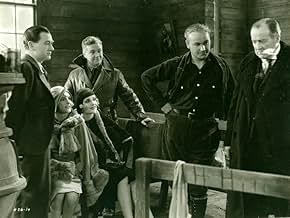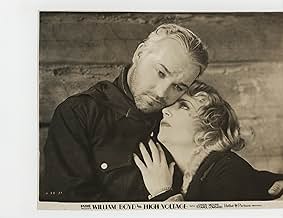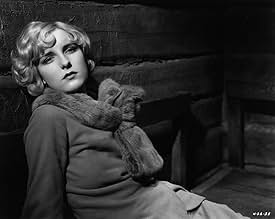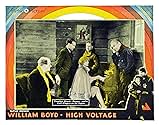A busload of passengers gets stranded in a snowstorm and take refuge in an abandoned church, where they run into a mysterious man who may be on the run from the law.A busload of passengers gets stranded in a snowstorm and take refuge in an abandoned church, where they run into a mysterious man who may be on the run from the law.A busload of passengers gets stranded in a snowstorm and take refuge in an abandoned church, where they run into a mysterious man who may be on the run from the law.
Featured reviews
OK, this is a very early talkie but it doesn't display the characteristic problems which a lot of 1929 pictures suffered from. The sound recording, the use of sound effects and the modern approach of hearing different people speaking at the same time and from different rooms makes this feel newer than most very early talkies. Similarly the acting, although still "old school" is so much more natural than you'd expect from a 1929 film. If you didn't know when this was made you might guess it was from the mid-thirties?
This isn't just something to watch out of academic interest. Whilst it's interesting to see what Pathé Exchange were doing before they were taken over by RKO, it's actually worth watching because it's entertaining. It's a little silly to compare this with THE HATEFUL EIGHT but the tension Tarantino created and the intensity and sense of immediacy is skilfully embroidered into this too. For such an old film it's refreshingly intelligent with a script that explores how real believable people (not lazy, one-dimensional stereotypes) interact. Imagine a 1929 version of the tv programme, Big Brother!
William Boyd gives a particularly impressive performance and had he not evolved into a cowboy actor, based on this, you could imagine him becoming a major star. Carol Lombard, although not quite there yet, isn't too bad either especially considering that this was her first talking role - however by 1929 standards, she's brilliant!
The story starts when a bus and its passengers get stranded in a snowstorm, and they take refuge in a church building, only to find that someone else is already there. The situation focuses on the strained relationships that develop when the varied personalities are thrown together for an indefinite period. It could have led to some tense, even memorable drama, but it never really develops more than an occasional moment of suspense.
Lombard's character gets most of the attention in any scene that she is in. As the bus driver, Billy Bevan gets a couple of good moments of comic relief, but some other lines that were probably intended to be funny just fall flat. Owen Moore and William Boyd have characters who are natural rivals for one another, but their scenes never pack the punch that they could have. Neither of them shows enough presence to make a formidable foe for the other.
While "High Voltage" does have a few worthwhile moments, most of it is just too routine to be anything more than a typical feature of its era and genre.
I wish we knew where the snowy scenes were filmed. They're convincing as heck, distant figures slogging across a huge snowy expanse, with arctic-like mountains in the far horizon. To me, these riveting visuals amount to the movie's high-point, with no evidence of special effects. Then there's the lonely church plunked down like a tiny island in the midst of that icy ocean, making me wonder where the worshippers could come from. Trouble is once the five refugees from the snow-bound bus enter the lonely refuge, the promising story collapses into endless talk with little real character development, except for Boyd and Lombard's budding romance. Apparently the writers had little idea how to generate drama from one-room confinement with six people. At the same time, there's those awful piano and singing moments that almost had me reaching for the off- button.
Seems like there should be some backstory to all this. But I guess 1929 was just too far for IMDB to reach back for detail. Then too shouldn't forget the church background of moral renewal that subtly underlies the climax. All in all, the vintage flick amounts to a visual oddity that unfortunately fails to develop its dramatic elements. Nonetheless, it's a good thing Lombard went on to a big-time career before an untimely passing, while Boyd got lifetime employment as the one-and -only Hopalong Cassidy.
This is one of those films in which a bunch of characters of diverse backgrounds are forced to sit through a crisis and talk about themselves. However, "Petrified Forest" this is not. Because it is an early sound film the director seems to think somebody has to be saying something all of the time, whether or not it is interesting or done in a non-monotonous tone. It will be the longest hour in your life. The only thing worse than boring stilted conversation is boring stilted conversation you can't hear well.
And, that BUS! Wow! Wish I owned one of those babies!
Did you know
- TriviaThis film's earliest documented telecast took place in New York City Friday 14 April 1950 on Premiere Playhouse on WPIX (Channel 11).
- Quotes
Bill Dougherty (The Boy): [as Egan comes up to Bill and Billie, who are affectionately cuddling] Well, whaddya want, buddy?
Detective Dan Egan (The Detective): What are you two doin'... playin' post office?
Bill Dougherty (The Boy): Well, if we was there wouldn't be no letter for you.
[Egan turns away]
- ConnectionsFeatured in SW 19770212 Reel 6AB (TR) (2026)
- SoundtracksMy Mother Was A Lady (or If Jack Were Only Here)
(uncredited)
Words by Edward B. Marks and Music by Joseph W. Stern
Performed by Billy Bevan
- How long is High Voltage?Powered by Alexa
Details
- Runtime1 hour 3 minutes
- Color
- Sound mix
Contribute to this page



























